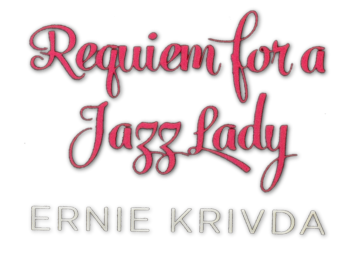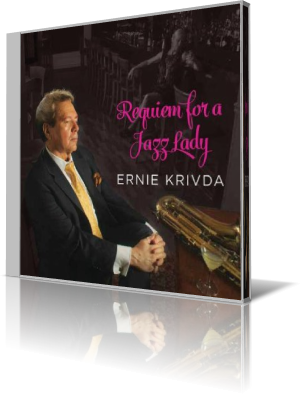|



Cleveland, Ohio, is home to the
Rock and Roll Hall of Fame. It’s also a hotbed of jazz. In Requiem
for a Jazz Lady, saxophonist Ernie Krivda sends a love letter to
the city on the shore of Lake Erie.
Krivda plays tenor saxophone. With him are Lafayette Carthon, piano;
Marion Hayden, bass; and Renell Gonsalves, drums.
“The Remarkable Mr. Black” is vintage, straightforward jazz. Krivda
comes right out of the gate, blowing with vigor. The rhythm trio is
firmly locked in, each player making a mark. But it’s the leader
expressing freely from start to just beyond the midway point. Carthon
takes point briefly. The piano is followed by a call-and-response
sequence, with Krivda leading the band during the calls, and Gonsalves
going it alone on the responses. It sets up a delightful ending.
“Questions” is a bright, sassy song. After a couple of passes on the
main theme, Krivda delivers a solo that’s part blues, part funk,
injecting a few throaty growls for emphasis. Carthon stretches out in a
style that straddles the line between New Orleans jazz and a church
sermon. Hayden also gets a moment to lick her chops.
“Great Lakes Gumbo” is a gritty blues piece. One can imagine Krivda
dreaming this one up in a club where the stage is near the kitchen, and
the aroma of various seasonings captures all his senses. His powerful
playing represents the hunger, the anticipation of the dish. Carthon’s
solo is that moment when the gumbo is served and Krivda takes a bowl.
Thusly sated, the leader rejoins the band to complete the song.
“Music for this album was put together from a frame of reference that I
would call reflective,” Krivda says in a note on the back cover. “There
are six originals and a standard that are mindful of my relationship to
jazz in Cleveland, Ohio (my home town).”
The story behind Requiem for a Jazz Lady begins in 1964. A
teenager named Beverly Jarosz was brutally murdered. The case remains
unsolved. Over the years, Jarosz’s sister contacted Krivda after combing
over details of the crime and seeking overlooked clues. Though unable to
offer additional information, Krivda never forgot. The Cleveland jazz
scene of the 1960s was thriving. Krivda honed his trade in the clubs and
bandstands of the city during that decade, so he decided that a future
project would honor that moment in time. So the album is part tribute to
Jarosz and part reflection of that era.inghamton University for his master’s in classical piano.

|

